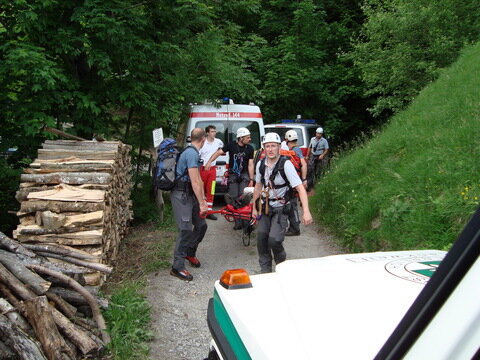Current Status of Medical Training in Mountain Rescue in America and Europe

Abstract
Elsensohn, Fidel, Thomas Niederklapfer, John Ellerton, Michael Swangard, Hermann Brugger, and Peter Paal. Current status of medical training in mountain rescue in America and Europe. High Alt. Med. Biol. 10:195–200, 2009: —Limited medical training of mountain rescuers may adversely affect the outcome of casualties. Thus, this study evaluated medical training of mountain rescuers in countries associated with the International Com- mission of Mountain Emergency Medicine. A questionnaire was completed by 33 mountain rescue services from 18 countries in America and Europe. First-aid topics taught most often are (absolute values, percentage): chest compression, hypothermia, cold injuries (32 of 33 organization 97%); avalanche rescue, first-aid kit of rescuer, cervical collar (31, 94%); hemorrhagic shock, automated blood pressure measurement, wound dressing (30, 91%); and heat injuries and SAMÒ SPLINT (29, 88%). Cardiopulmonary resuscitation manikins are used in 32 (97%) organizations, and in 17 (52%) organizations manikins have feedback functionality. After training, exams are compulsory in 27 (83%) organizations. Yearly retraining is done in 12 (36%) organizations; 22 (67%) orga- nizations would like to increase medical training. The study shows high variability in the medical training programs among the surveyed organizations and the need to improve medical education. The authors recom- mend standardization of medical training and examinations on an international level. Additional topics tailored to the typical injury and illness patterns of a particular area should supplement this core training. Training should be performed by highly qualified instructors on a yearly basis.
-------------------------------
Please look at the attached file for the complete recommendation!